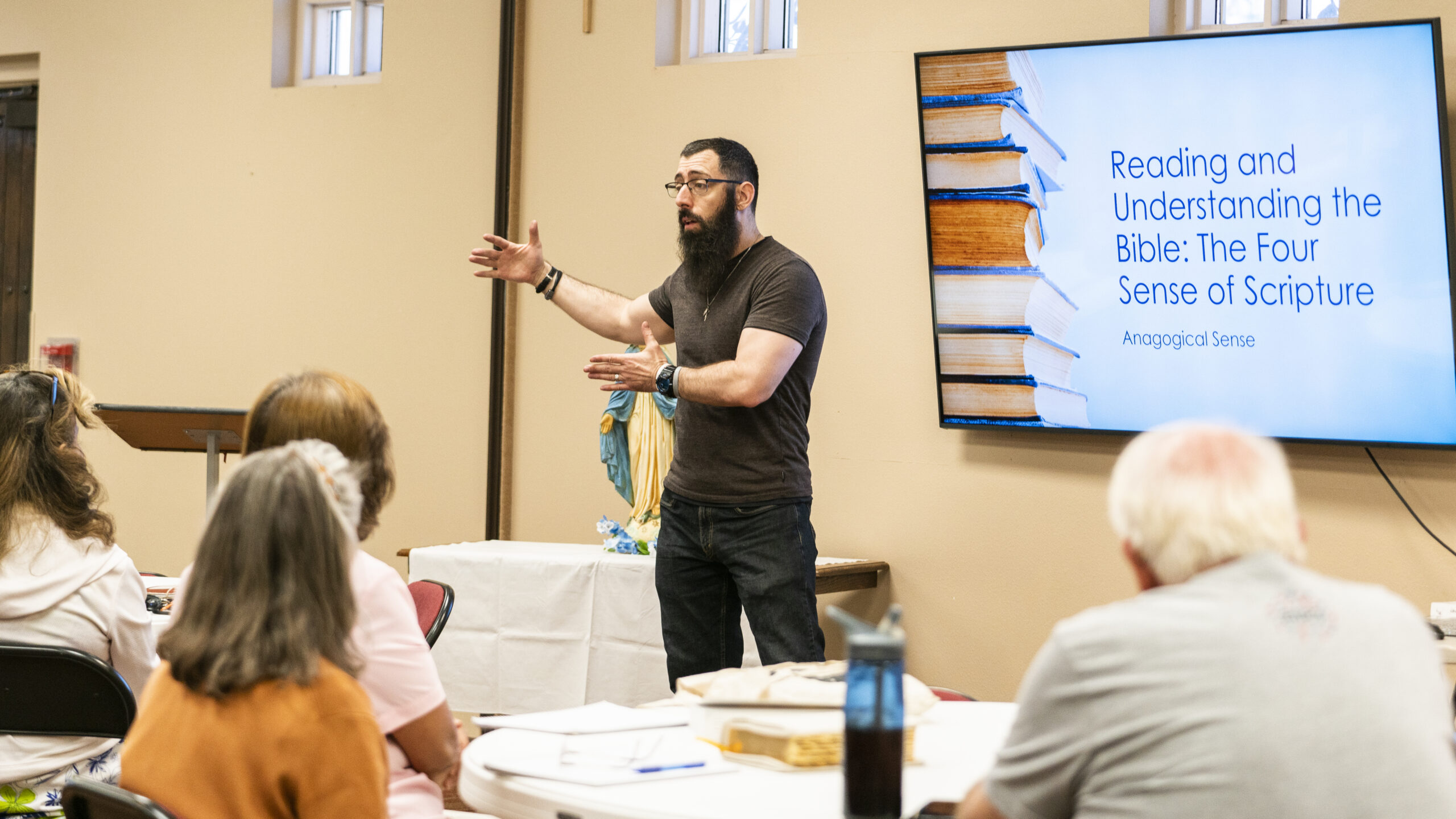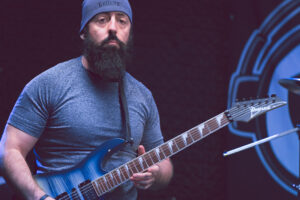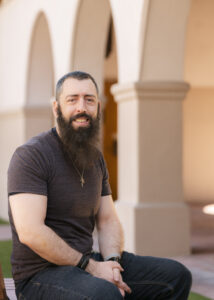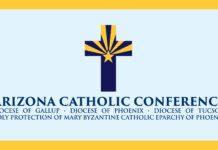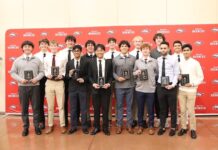By Joyce Coronel, Together Let Us Go Forth ~ Juntos Sigamos Adelante Magazine
When Chris Vitale settles in to tell his story, it’s hard to imagine he was once dead set on proving Jesus Christ is just a myth.
As a 9-year-old, Vitale often woke up on Saturday mornings and prayed the rosary. He attended religious education classes, and his family was at Sunday Mass faithfully. He even read the Bible and entertained thoughts of becoming a priest one day.
In high school, he started spending time with peers who rocked his world. Literally.
“Anybody who had long hair and a concert T-shirt, I was hanging out with them,” Vitale said. Although he was also a bit of a jock as a wrestler and football player, he became immersed in the world of rock ‘n roll and heavy metal.
His new friends on the music scene “had really deep thoughts about the world around them and were rebelling against people and the status quo, their parents and society,” Vitale said. They had some pointed questions about his Catholic faith, too.
One line of questioning in particular shook him: “How do you know what you believe is real? How do you know it’s true?” One friend hit him with the classic, “If God is all-powerful, can He build a rock He can’t lift?”
“All of a sudden it’s like maybe I don’t have the real deep understanding of God that I thought I had,” Vitale said.
Thus began his journey seeking truth. It was a journey that included sharp turns, detours, and moments of crisis. During his late teens and early 20s, he broke away from the Catholic Church entirely.
“It wasn’t even so much that I was angry at the Church. In fact, it was really difficult for me to detach,” Vitale said. “It was actually kind of heartbreaking.”
His parents advised him to speak with the pastor of their parish, but Vitale refused, telling them he was an adult and wanted to figure things out on his own.
Then, he met a girl. Turns out the young lady was an Evangelical Protestant whose mother was eager to share her church’s version of the Gospel. She also raised the standard objections to Catholicism: confession, devotion to the Blessed Virgin Mary, etc.
Vitale didn’t have good answers for those challenges, and they began to niggle. He started attending services with his girlfriend’s family.
“There was a Sunday I walked down the aisle and then somebody took me and prayed with me, and I said, ‘Yes, I give my life to Jesus.’
“I spent the next five years in that world, being an Evangelical Protestant, trying to bring people to Jesus and show them a very simple path to salvation,” Vitale said.
Still, there were problems. His Catholic formation early on meant that he looked at Scripture through a Catholic lens. What to do about Matt. 16:18 in which Christ declares Peter the rock on which He would build His Church?
Beyond that, there was the issue of authority vis-a-vi the interpretation of Scripture. He was told to pray to the Holy Spirit for guidance, but it seemed everyone had his or her own take.
“At a Bible study, it would be, ‘here is this passage’ and you would get a very wide, different interpretations of what it meant. It usually started with a lot of, ‘well, I think it’s this or it means that,’ almost indicating, ‘well, you may never totally know, but here it is.’ I kept hitting a wall.”
Around that same time, Vitale developed a number of serious medical issues, leaving him emaciated and ill for some years.
“It really threw me into a tailspin in my life. I had to spend the next years trying to get answers and on top of it, I wasn’t really getting answers in my own faith walk.”
The crushing blow came when his Evangelical friend told him that maybe he needed to just accept that the Lord was calling him home. “That was the biggest trigger right there. From there on I said, ‘well, forget God.’” Ultimately, he found healing at the hands of a physician.
Believing that science alone had saved him and held the answers to his quest for truth, Vitale spent the next 11 years as a militant atheist, reading books by prominent atheists, attending conferences, and watching videos online. He eventually became a Jesus mythicist, attempting to prove that belief in Christ was akin to believing in fairy tales.
Then, in 2014, he watched an online debate between atheist historian Richard Carrier and Trent Horn. Vitale expected Carrier to demolish Horn’s arguments, but nothing could have been further from the truth.
Horn, a convert to Catholicism with master’s degrees in theology, philosophy, and bioethics, dominated. “It was just A-Team, out-of-the-park,” Vitale said. “He really held his ground and that gave me pause.”
The combination of Horn’s arguments on the existence of Jesus Christ in history, His establishment of a Church and His death and resurrection were what compelled Vitale to take another look at his childhood faith. He thought back to all the times he received the Eucharist; he read about what the Early Church Fathers taught.
Vitale next began eating up books by well-known Catholic converts like Scott Hahn like Jimmy Akin. It wasn’t long before he found himself back inside the Catholic Church, this time with a burning desire to share his rediscovered faith. Soon, he’ll complete a master’s degree in theology from St. Leo University. He’s also teaching a five-week course at St. Andrew the Apostle Parish on the four senses of Scripture.
These days, Vitale is busy filming episodes of The Return for his YouTube channel. The videos allow those who have returned to the Church to tell their reversion story. A series of videos that features Our Lady of Mount Carmel parishioners is on the parish website.
The videos, Vitale said, feature “real people who went through what you’re facing and came out on the other side and came back to our Lord.”
He said he thinks many young Catholics are longing for a deeper understanding of their faith.
“They want more powerful understanding of what they’re reading and studying and an understanding of how to approach it,” Vitale said.
“I think a lot of people are hungry for that.”



